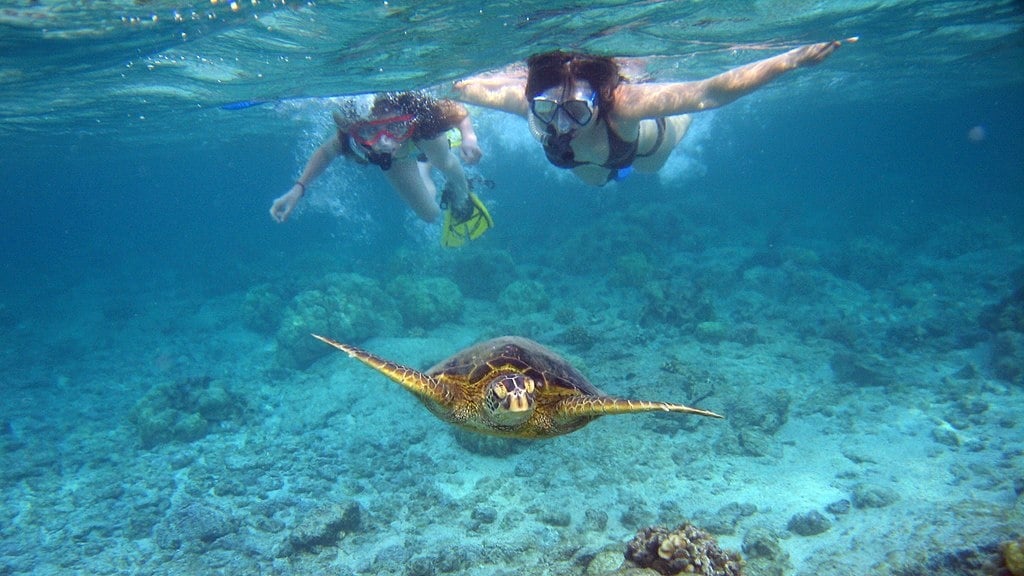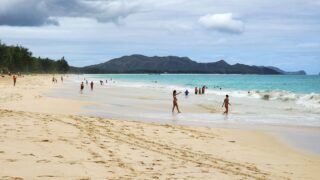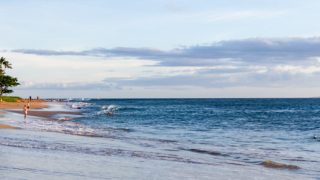Did you know that some of Hawaii’s postcard-perfect beaches turn into sting zones nearly every month? That single sting cost one family not only precious beach time but also money. They’d planned their trip for months. About ten minutes after entering the water, a jellyfish tentacle wrapped around one swimmer’s leg. The swimmer shouted for help and was escorted to the lifeguard stand, where staff applied vinegar spray and treated the sting. Warning flags were already posted along the beach.
Box jellyfish arrive like clockwork about 8 to 10 days after each full moon, transforming south-facing beaches into sting zones for several days: Waikiki, Ala Moana, and Hanauma Bay post warnings or even close sections of the beach. The pattern has remained consistent for years, without fail.
Dozens of swimmers each year end up in Hawaii urgent care clinics with jellyfish stings, at an average treatment cost of $100 or more. Already booked? Check your arrival date against the table below.
| Month | High-risk days ⚠️ | Notes |
|---|---|---|
| January 2026 | Jan 11–13 | Low season |
| February 2026 | Feb 9–11 | Valentine’s Day |
| March 2026 | Mar 11–13 | Spring break |
| April 2026 | Apr 9–11 | Low season |
| May 2026 | May 9–11 | Pre-summer getaways |
| June 2026 | Jun 7–9 | Early summer vacations |
| July 2026 | Jul 7–9 ⚠️ | Highest beach traffic and summer visitors |
| August 2026 | Aug 6–8 ⚠️ | End of peak summer season |
| September 2026 | Sep 4–6 | Labor Day overlap |
| October 2026 | Oct 4–6 | Low season |
| November | Nov 2–4 | Low season |
| December | Dec 2–4 | Low season |
If your trip overlaps these dates, the south shores are the risky ones for jellyfish. The tentacles drift just below the surface, and they can be found on the sand; it only takes one to ruin a beach day or a vacation.
The family that learned the hard way.
They had arrived the night before, still shaking off jet lag. The ocean looked harmless, even with the warning sign posted. It was a postcard-perfect morning and not too busy. The sting changed everything.
According to the family, that single sting cost them $340: a lost snorkeling deposit, an urgent care clinic visit, and a rebooked boat tour. They later discovered they had been swimming exactly eight days after the full moon. The jellyfish had arrived on cue, just like they do most every month.
Why the jellyfish appear.
Box jellyfish follow a rhythm as steady as the tides. They drift in from deeper water about eight to ten days after each full moon, stay for two to three days, then vanish again. The Waikiki Aquarium tracks its arrivals and posts alerts, but few visitors check before heading to the beach. Even very longtime residents occasionally forget to check the moon calendar. The same calm currents that make south shore beaches perfect for swimming also carry the jellyfish right to shore.
What beaches are affected by box jellyfish.
High-risk beaches: Waikiki, Ala Moana, and Hanauma Bay. Ko Olina occasionally joins the list. On the Big Island, Kailua-Kona sees a few sightings each year. Maui and Kauai are spared more frequently than not because their south shores are smaller and currents are weaker. But not entirely. Both Salt Pond and Poipu Beach can have problems, for example. Many residents switch to the west or north shores during jellyfish weeks.
Man o’ war or box jellyfish.
It’s easy to mix them up, but they’re actually different creatures. Box jellyfish are almost transparent, cube-shaped, and show up on that lunar schedule. Portuguese man o’war have blue balloons and blow in with strong trade winds. Both sting, but only true box jellyfish create these predictable stinging invasions.
On Oahu, the beaches with Portuguese man o’war are Waimānalo, Kailua, Lanikai, and Makapuʻu. Again, these are not part of the lunar cycle and are timed when strong trade winds blow.
What to do if stung.
- Get out of the water immediately.
- Rinse the sting with vinegar, not fresh water.
- Find a lifeguard; they’ll apply spray and topical treatment.
- If pain or swelling persists, visit a nearby clinic.
- Avoid rubbing the area, which can activate more stingers.
Symptoms typically fade within 24 to 48 hours. Research online. There are many new solutions to investigate.
How residents plan.
Locals check the moon the same way they check the surf report. They plan pool days or head to the North Shore during jellyfish windows. As editor Jeff said, “Only once did I forget, and I paid for it.” A regular commenter added, “I’ve made 95 trips to Hawaii and never had a problem because I always check the calendar first.”
Hawaii visitors should check their trip dates against the calendar above. If dates overlap, they should plan alternate beach days, head to the north or west shores instead, or consider adjusting travel dates.
Have you ever seen jellyfish or man o’ war during your Hawaii trip? What happened?
Get Breaking Hawaii Travel News






I had the misfortune once of being on a Shark snorkel off Oahu during Jellyfish time. Thankfully they were very tiny and the stings didn’t really hurt they were more of an annoyance than anything. Everyone on the boat was complaining about them
Great article, BoH!
Mahalo for this valuable info!
We just returned to Phoenix from Kauai. Our trip over was the Hawaiian Airlines flight that we have taken for years with the lay-flat seats in first class. This return flight was on Alaskan first class through Seattle. No lay-flat seats, food that was inedible and a much longer trip. Not a first-class experience and not one we are willing to repeat. We are cancelling our planned December trip rather than repeat this experience. Trips will not have to be planned long in advance to get the first-class seats from Phoenix. In fact, an economy ticket from Phoenix would be preferrable to the first-class ticket through Seattle.
Right on Robert!
Nobody living in the Southwest wants to stop in Seattle on the way to and from Hawaii.
I am so done with Hawaiian and Alaska Airlines.